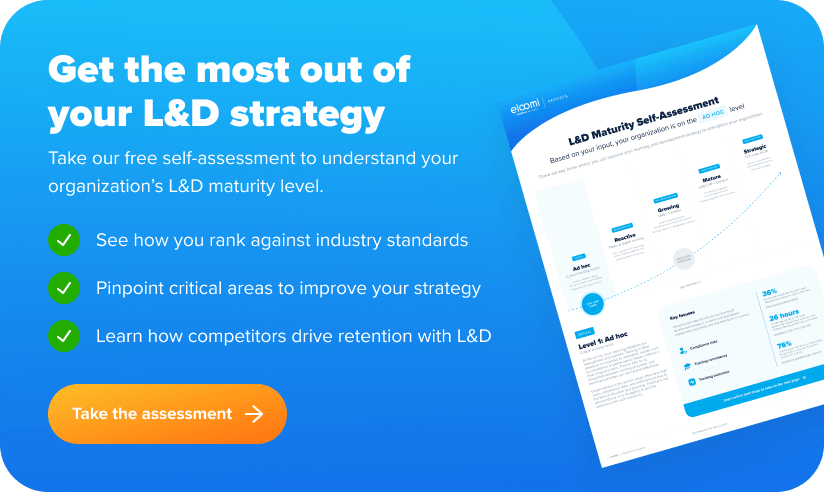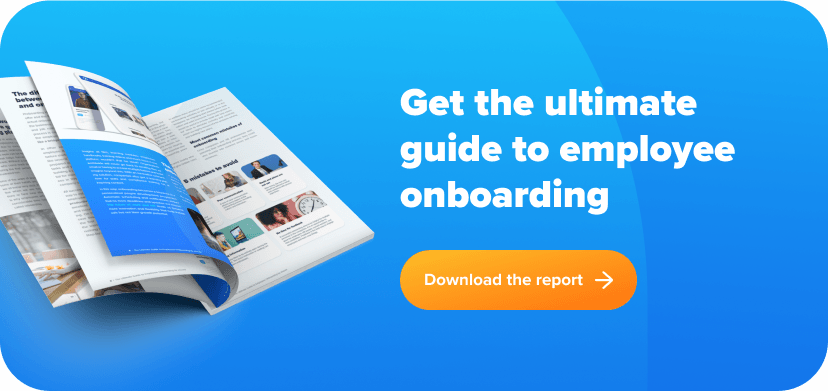Understanding remote learning strategies is essential for L&D best-practice, particularly in a business landscape with a lot of shifting and changing. As more and more businesses move to remote or hybrid work schemes, understanding how to structure training for teams working from home has become a valuable tool for decision-making, workforce development, and overall operational efficiency. But what does remote LMS learning mean? And what’s the difference between unsupervised vs supervised learning? Let’s set the record straight.
The role of remote learning in employee development
Businesses across all industries have felt the impact of remote working. According to Gartner, more than two thirds of job candidates who currently work onsite would prefer a remote or hybrid model. So whether you’re currently expanding to offer remote positions, or simply exploring adjustable models, it’s more crucial than ever to plan around teams that are working, and learning, remotely.
Remote learning, or distance learning, refers to the education process where learners and instructors are not physically present in the same location. It has grown significantly in importance due to the rise of remote and hybrid work, as well as advancements in Learning Management Systems (LMS) and Learning Experience Platforms (LXP). Utilizing an LMS for remote workforce training allows companies to efficiently manage training and development across diverse locations and roles.
By leveraging remote learning platforms, HR are able to effectively upskill employees across locations, roles, or even by individual development plans. The flexibility, scalability, and accessibility of remote learning means that employees can learn at their own pace, anytime, anywhere.

Balancing supervised and unsupervised learning
When you start managing training for remote teams, you’ll most likely come across the question of supervised vs unsupervised learning. The definition is straightforward: supervised learning is when a teacher or coach is present, while unsupervised learning is when learners are left to learn by themselves.
Managing remote teams often leaves L&D practitioners with a challenge around monitoring learning and motivating employees, all while having to justify and prove outcomes from learning programmes. But this is also where many have discovered the benefits of an LMS platform, which allow users to learn at their own pace, while offering opportunities both for supervised and unsupervised learning.
With an LMS for remote workforce, you’re able to tailor courses, monitor progress, and collect real-time feedback to keep your team aligned and motivated. Use the system’s interactive features to train on specific skills, keep them engaged, and foster a sense of connection, even while working remotely.
Managers are able to oversee employees’ growth by assigning courses, tracking progress, and hosting check-ins to ensure alignment with company objectives. This is especially valuable when teaching about company policies, compliance standards, or specific roles.
Plus, webinar and event features allow for the scheduling of supervised learning, with coaches or subject-matter experts able to host online or physical classes in real-time to share information on a new topic, host workshops, or just get employees engaged around a critical launch.
We’ve found that the best results come from a mix of supervised and unsupervised learning, which is why our focus is on encouraging blended learning by offering a vast array of resources for them to explore. With an LMS for remote workforce, you’re able to let employees learn at their own pace, develop soft skills and broaden their knowledge in areas they’re passionate about.

How to manage remote learning initiatives
Working in HR, you’ve probably been tasked with overseeing a switch to remote learning initiatives, or exploring how best to support remote and hybrid workers. The truth is, it’s not so easy for managers or employees, either. Remote learning, training, and working can leave teams feeling siloed, so how can we help them?
Great remote learning practices focus on four main areas:
- Communication
- Engagement
- Structure
- Feedback
When you start to plan remote learning initiatives, it’s important to ensure clear communication and planning – not just within your team, but across the organization. Who will be in charge of remote learning initiatives? Who will communicate with new and current employees? Communication is a huge sticking point for remote learning, so make sure you have a clear plan of action before launching your new initiative.
It’s also essential that your remote learning initiatives track employee engagement. Not just screen time. LMS and LXP programs help here by letting you track user engagement with real-time reporting on courses completed, deadline reminders, and even providing a source for feedback.
Next, make sure you have a set structure in mind for the training you hope to achieve. When you’re working remotely, it’s common to have a lot of information thrown at you at once – which you’re left to make sense of. An LMS for remote workforce helps by breaking information down into bite size courses that are proven to work better for long-term knowledge retention, as well as making it easier for you to track training progress.
Last, it’s important that you gather feedback from learners, managers, and admins throughout the launch of your remote learning programs. Use survey or feedback capabilities to gather data directly from learners, and make sure to speak with learners to see how training is going and look for possible improvements. Congratulations! You’re now well on your way to sustainable remote learning.
How to simplify and optimize training with an LMS for remote workforce
If you’re in doubt about how to launch and scale your remote learning processes, consider starting with an LMS for remote workforce training. As companies expand, it becomes essential to leverage solutions that simplify and optimize our processes. eloomi is a comprehensive platform that addresses these needs, particularly in the realm of remote learning, and aligns perfectly with the evolving role of HR in today’s business landscape. Let’s take a look at how it works.
Crafting effective remote learning and development initiatives
eloomi’s LMS for remote workforce is designed to make remote learning and development initiatives better for everyone involved. It offers an easy-to-use interface for learners, subject matter experts, and administrators, ensuring a seamless user experience. The platform facilitates the creation and delivery of diverse learning content, making it easier than ever before to upskill and reskill your people.
Ensuring total business compliance
Compliance is an essential training requirement overseen by either your HR department or dedicated compliance team. With eloomi, you can ensure that all mandatory training and compliance requirements are met, even in a remote learning environment. The platform allows you to schedule, track, and manage compliance-related training, ensuring that your organization remains aligned with industry regulations and standards.
Content creation and training
In terms of content and training, eloomi shines by offering a vast library of pre-built courses and the ability to customize training material. And that is particularly when facilitating remote learning. It allows you to create, curate, and distribute content that meets your organization’s specific needs. Whether it’s specialized training modules or general skill development courses, eloomi ensures that your workforce has access to relevant and high-quality learning resources.
Performance appraisals and continuous improvement
Performance appraisals are a key element of HR practices. And eloomi’s people development solution integrates performance management tools, facilitating regular feedback and performance reviews. It enables you to set goals, track progress, and manage meaningful employee check-ins, fostering a culture of continuous improvement and accountability.
Leveraging insights from reporting and analytics
Among everything else, eloomi’s LMS for remote learning excels in providing robust reports and insights, even more so in a remote learning setting. The analytics feature provides a wealth of data about course completion rates, learner progress, and performance metrics. These insights can guide your decision-making process and help you identify areas of improvement, ensuring your learning and development initiatives remain effective and impactful.
Streamlining onboarding processes
Onboarding is a critical HR process that sets the tone for an employee’s journey in the organization. Especially when it comes to remote learning and working.
eloomi streamlines this process by providing a centralized platform to create engaging and interactive onboarding programs. This allows new hires to quickly feel at home the company culture, understand their role and responsibilities, and to start contributing effectively right from day one. For more info, take a close look at these proven strategies to help you nail onboarding processes.

Additional features: mobile learning for flexibility and accessibility
If you’re launching a new remote learning initiative, consider whether you should launch your learning platform on mobile. The thing is, learning needs to be flexible and accessible. Recognizing this, eloomi supports mobile remote learning, allowing employees to access training materials and courses anytime, anywhere. This feature not only enhances convenience for learners but also increases engagement and completion rates by allowing employees to learn at their own pace and convenience.
Access remote learning today
The remote work revolution is a huge opportunity for businesses looking to scale up their training and automate the tasks that take the most time out of your day.
With the right plan in place and reconciling the difference between supervised and unsupervised learning there’s not much you can’t do! HR should feel empowered to drive organizational growth, streamline operations, and build a resilient, adaptable workforce ready to meet the challenges of the future. So why not explore an LMS for remote workforce training that can support you today?
Ready to get started? Learn more about our remote learning features.






